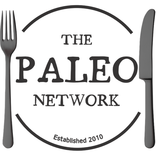What’s so special about grass fed beef?
Grass fed beef gets plenty of recognition on the Paleo diet, and rightly so. We know our ancestors would have undoubtedly eaten copious amounts of wild fed ruminants; not the sort that were shuttled in their droves into giant feed-lots, devoid of natural light and space to roam, and fed with industrialised slop made from genetically modified corn, barley and soya. But, ideology aside, what is it that actually makes grass fed beef superior to ‘modern’ grain fed beef? Is it worth paying extra for – sometimes double the price? In a short answer, yes. And here’s why…

As the demand for beef (and meat in general) rose significantly throughout the 20th century, ‘farmers’ began to reassess their production methods with one goal in mind. Profit. These beef barons were prepared to stop at nothing to decrease the production costs of each cow, with no concern for the animals’ welfare or for the welfare of the people eating the meat; and thus, factory farming was born. There were, of course, many who still wanted to do things the right way, and a divide became apparent. As factory farming has developed throughout the years, and cheaper, nutrient void food has become more available, this divide has become significantly greater.
One reason we eschew grains on the Paleo diet (apart from lectins, gluten and phytic acid), is the distinct lack of nutrient density that they offer in comparison with whole foods. If you genetically modify these grains, the nutrient density becomes even lower; practically non-existent. When cattle are fed a diet that is so devoid of nutrients, the meat they offer is therefore much less nutritious than that of an animal fed on a natural diet. This shows in the nutritional profiles of grass fed vs grain fed meat; grass fed is significantly higher in vitamins (in particular B vitamins, vitamin E, vitamin K and vitamin B12), minerals (including magnesium, selenium, zinc and calcium), CLA and Omega 3. We’ll come on to that last one again shortly. The lifespan of the cows also plays a part in the nutrients they offer; as factory farmed cattle have a much shorter lifespan (as they are overfed and under-exercised so that they reach the slaughter house in double quick time), they do not have time to build up the nutritional profile that they should do naturally. Quite simply, unhealthy diet + overeating + lack of exercise = nutritionally depleted beef. The same formula would also mean a nutritionally depleted human as well, which isn't really much of a shock.
We've spoke about omega 3 and omega 6 before, and how it is important to maintain as close to an even ratio as possible to reduce inflammation in the body. Thanks to their diet, grass fed beef is significantly higher in omega 3 than its grain fed counterpart. On average, grass fed beef has a ratio of around 2.5/1 (omega 6:omega 3). Depending on the grasses they graze on, it can be as low as 1:1. The ratio of grain fed beef, on the other hand, can exceed 20:1.
To decrease the production time, factory farmed cows are fed artificial hormones to fatten them up more quickly. The presence of these hormones have been linked to hormone irregularities in the humans who eat a lot of grain fed beef – which is another reason to source your meat carefully.
To summarise, grass fed beef is better for you, better for the environment, better for the economy, and better for the animals themselves. It’s the way that beef should be eaten, but sadly, it is expensive. If you are limited in how much grass fed beef you can buy for financial reasons, opt for leaner cuts of meat when you buy grain fed. There will be less of an omega 3:6 imbalance as the all-round fat content is lower. Toxins are also stored in the fatty deposits of the animals, so by choosing leaner cuts you’ll minimise the toxins that you consume. If you’re completely against buying grain fed, look for cheaper cuts of meat like shin and chuck roast, and cook them slowly. Offal is a great bet too.
Do you eat grass fed (or pastured) meat? Is it important to you?























